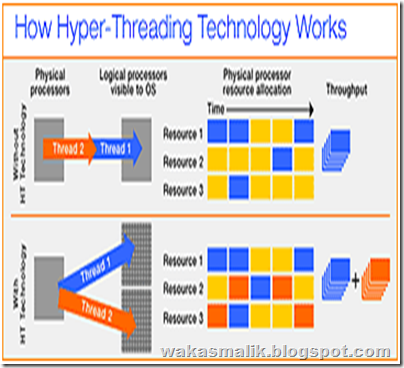Faster clock speeds are an important way to deliver more computing power. But clock speed is only half the story. The other route to higher performance is to accomplish more work on each clock cycle, and that's where Hyper-Threading Technology comes in. A single processor supporting Hyper-Threading Technology presents itself to modern operating systems and applications as two virtual processors. The processor can work on two sets of tasks simultaneously, use resources that otherwise would sit idle, and get more work done in the same amount of time.
HT Technology takes advantage of the multithreading capability that's built in to Windows XP and many advanced applications. Multithreaded software divides its workloads into processes and threads that can be independently scheduled and dispatched. In a multiprocessor system, those threads execute on different processors. HT Technology allows a single Pentium 4 processor to function as two virtual or logical processors. There's still just one physical Pentium 4 processor in your PC — but the processor can execute two threads simultaneously.

